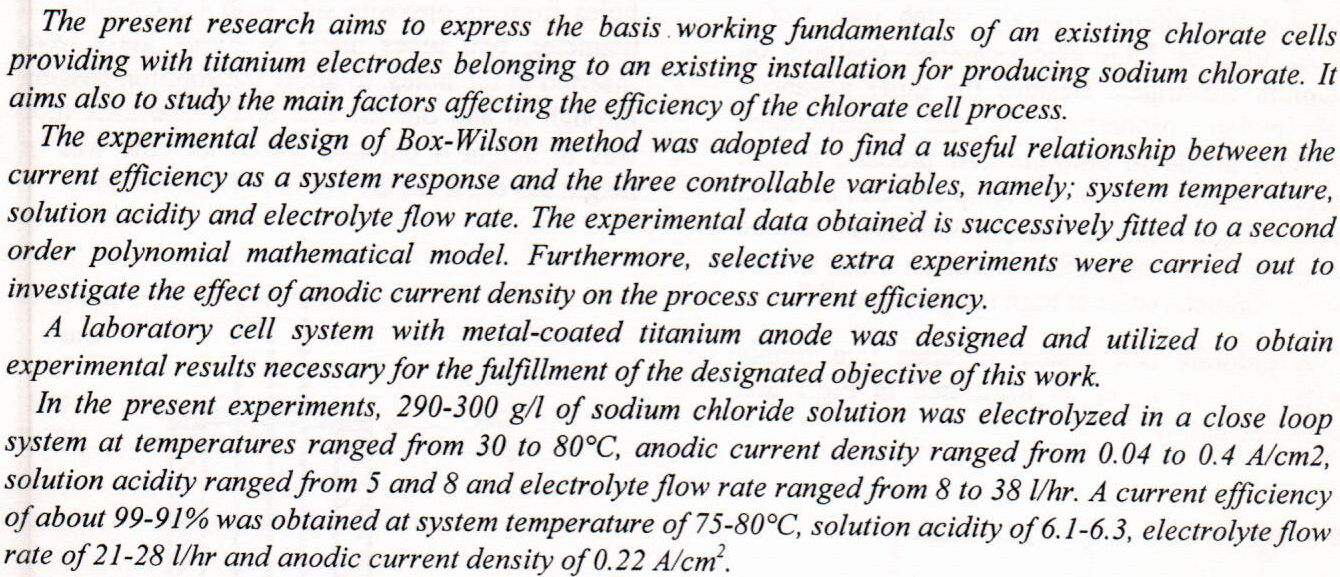
In this work, a novel biocatalytic process for the production of 7-methylxanthines from theobromine, an economic feedstock has been developed. Bench scale production of 7-methlxanthine has been demonstrated. The biocatalytic process used in this work operates at 30 OC and atmospheric pressure, and is environmentally friendly. The biocatalyst was E. coli BL21(DE3) engineered with ndmB/D genes combinations. These modifications enabled specific N7- demethylation of theobromine to 7-methylxanthine. This production process consists of uniform fermentation conditions with a specific metabolically engineered strain, uniform induction of specific enzymes for 7-methylxanthine production, uniform recovery an
... Show More (9)
(9)
 (47)
(47)
 (46)
(46)
The manuscript should contain an abstract. The abstract should be self-contained and citation-free and should not exceed 200 words. The abstract should state the purpose, approach, results and conclusions of the work. The author should assume that the reader has some knowledge of the subject but has not read the paper. Thus, the abstract should be intelligible and complete in it-self (no numerical references); it should not cite figures, tables, or sections of the paper. The abstract should be written using third person instead of first perso The fast microwave assisted pyrolysis (FMWAP) of water hyacinth (WH) for biochar production is investigated. Taguchi’s method was used to optimize FMWAP parameters. The effects of microwave
... Show More (7)
(7)
 (7)
(7)
 (22)
(22)
 (20)
(20)
Design and build a center basins new p-type four mirrors were studied its effect on all parameters evaluating the performance of the solar cell silicon in the absence of a cooling system is switched on and noted that the efficiency of the performance Hzzh cell increased from 11.94 to 21 without cooling either with cooling has increased the efficiency of the
The aim of the research is to identify an appropriate training method that raises the levels of immune globulins (IgA, IgM, IgG) and white blood cells and the effect of training by (HIT) method using resistance (weights) as a training curriculum that increases immunity and ensures the continuation of the pills after the return of activity from the stone The response to the Covid-19 epidemic among amateur weightlifters, the researchers relied on the method of trace analysis in an experimental way by conducting a pre-, medial and post-test with the same experimental one agroup on a sample of amateur weightlifters in the Fury private hall for weightlifting and body building in Adhamiya, the number of sample members reached (15 players) who int
... Show More (5)
(5)
The present study included the microscopic and molecular identification of Entamoeba histolytica by using specific primers to detect four virulence factors possessed by Entamoeba histolytica. Virulence factors included Active Cysteine proteinase, Galactose/N-acetyl-D-galactose-lectin, Amoeba pore C and Phospholipase. Titanium dioxide nanoparticles (TiO2NPs) were synthesized from Pseudomonas aeruginosa which producing Pyocyanin pigment as a reducing agent to form it. After that we studied the ability ofTiO2NPs to inhibit virulence factors production and curing the genes responsible for encoding them by using four different dose 2 ,3, 4, 6 mg/Kg and administered by intraperitoneal injection
... Show More (1)
(1)

